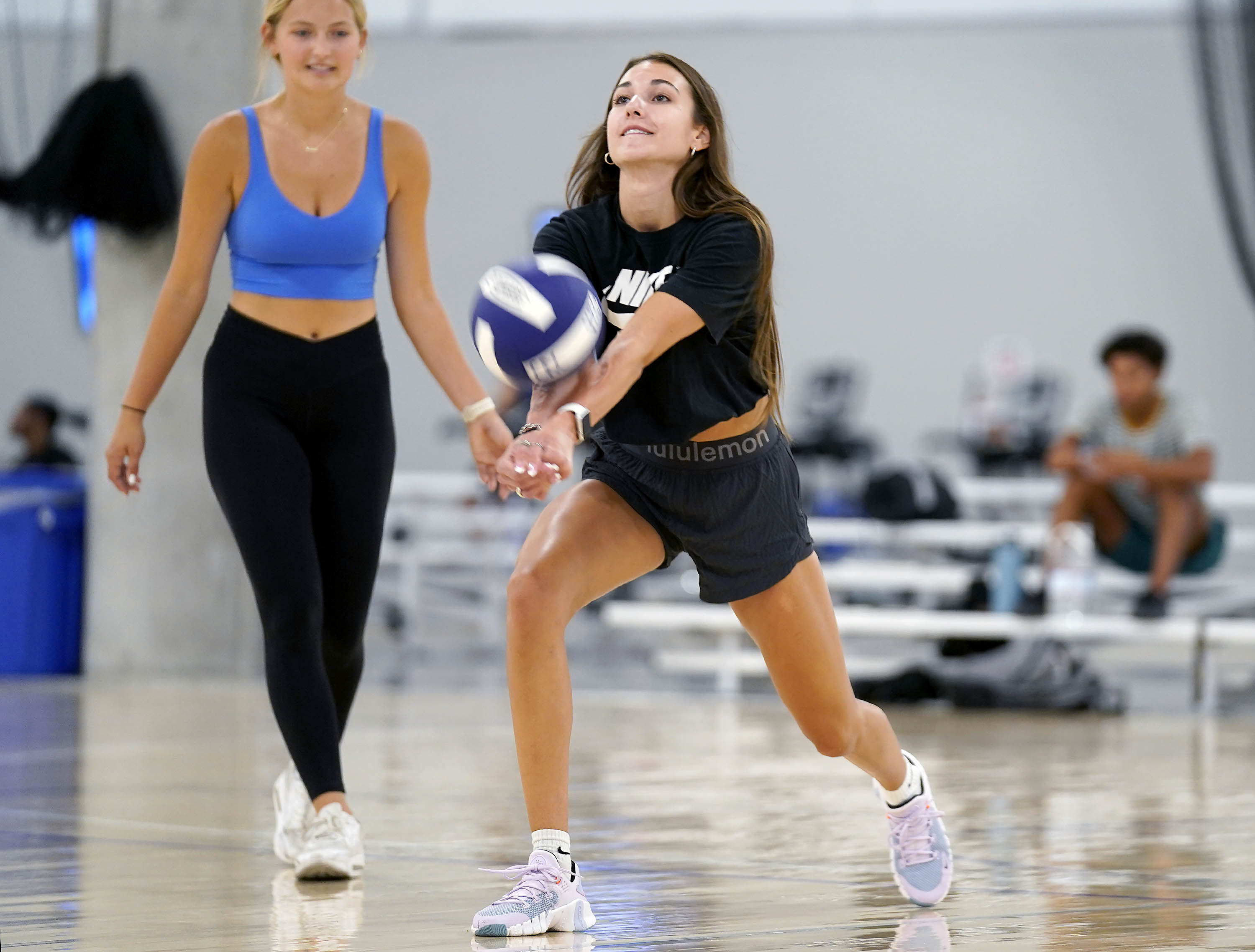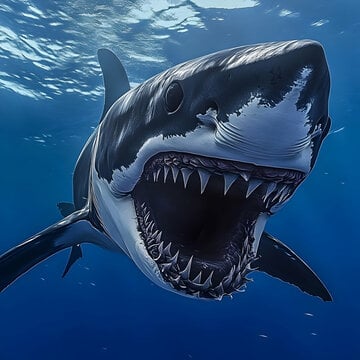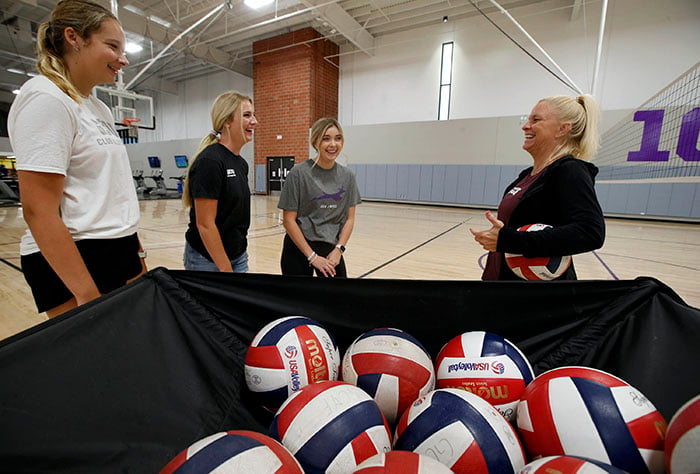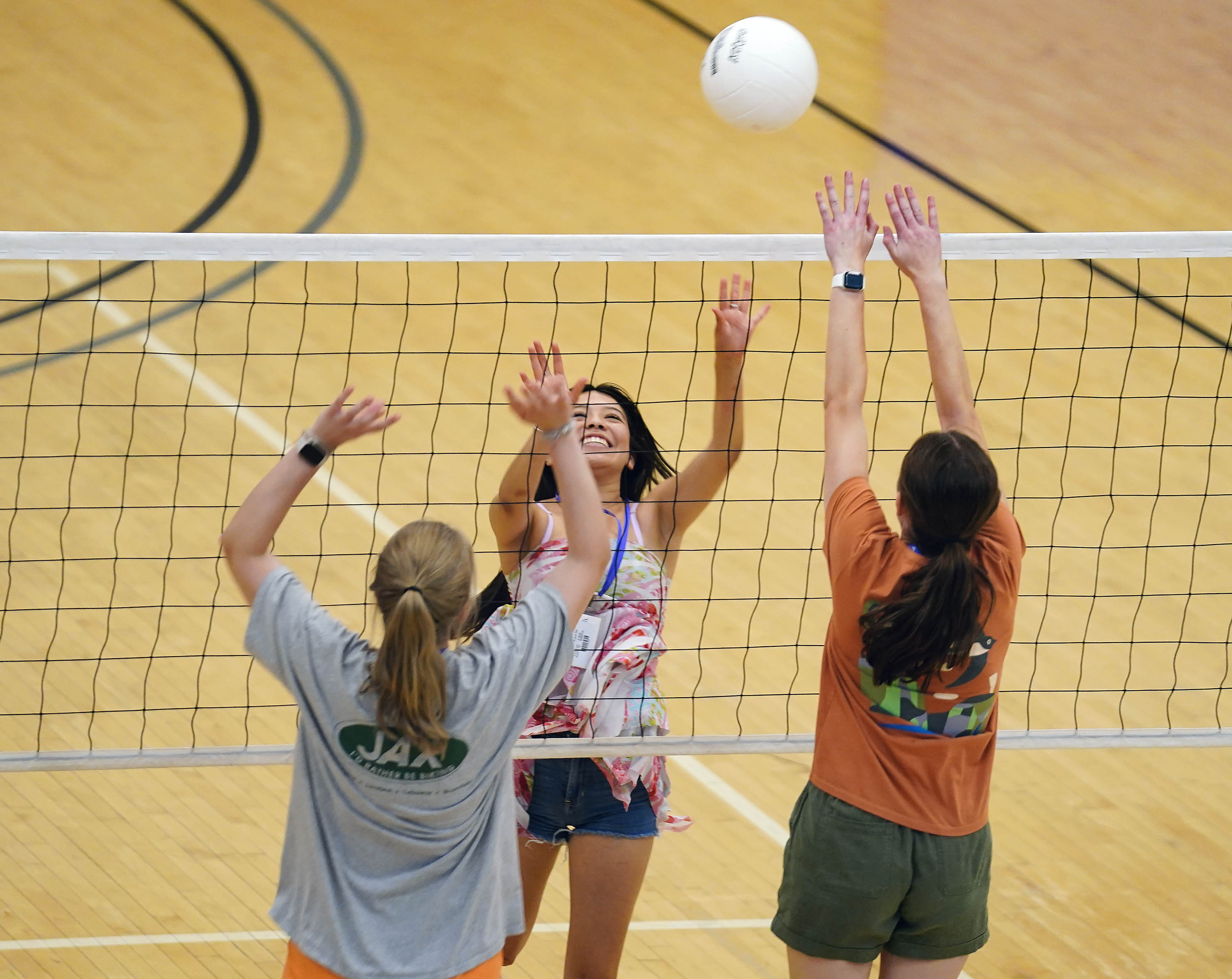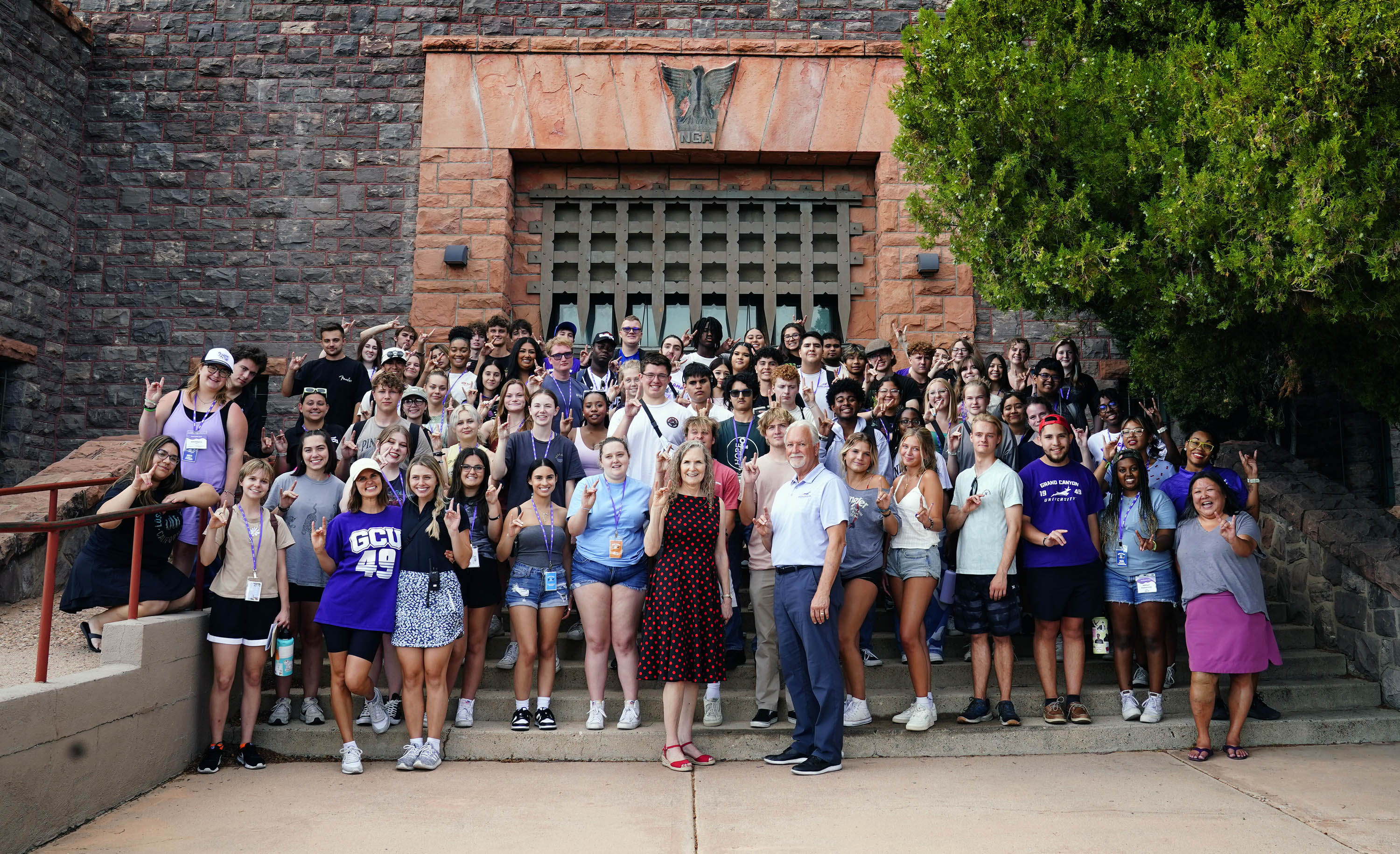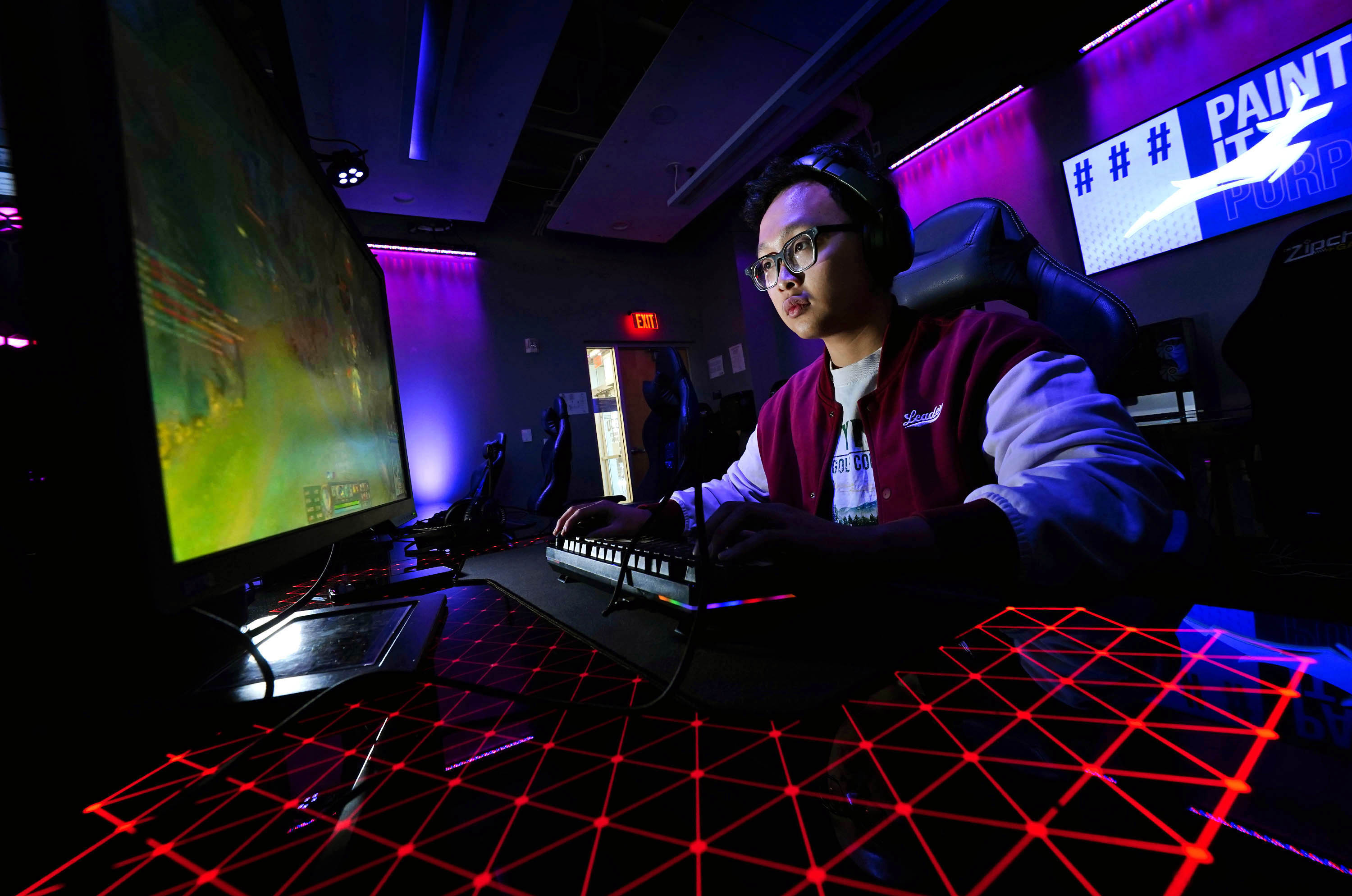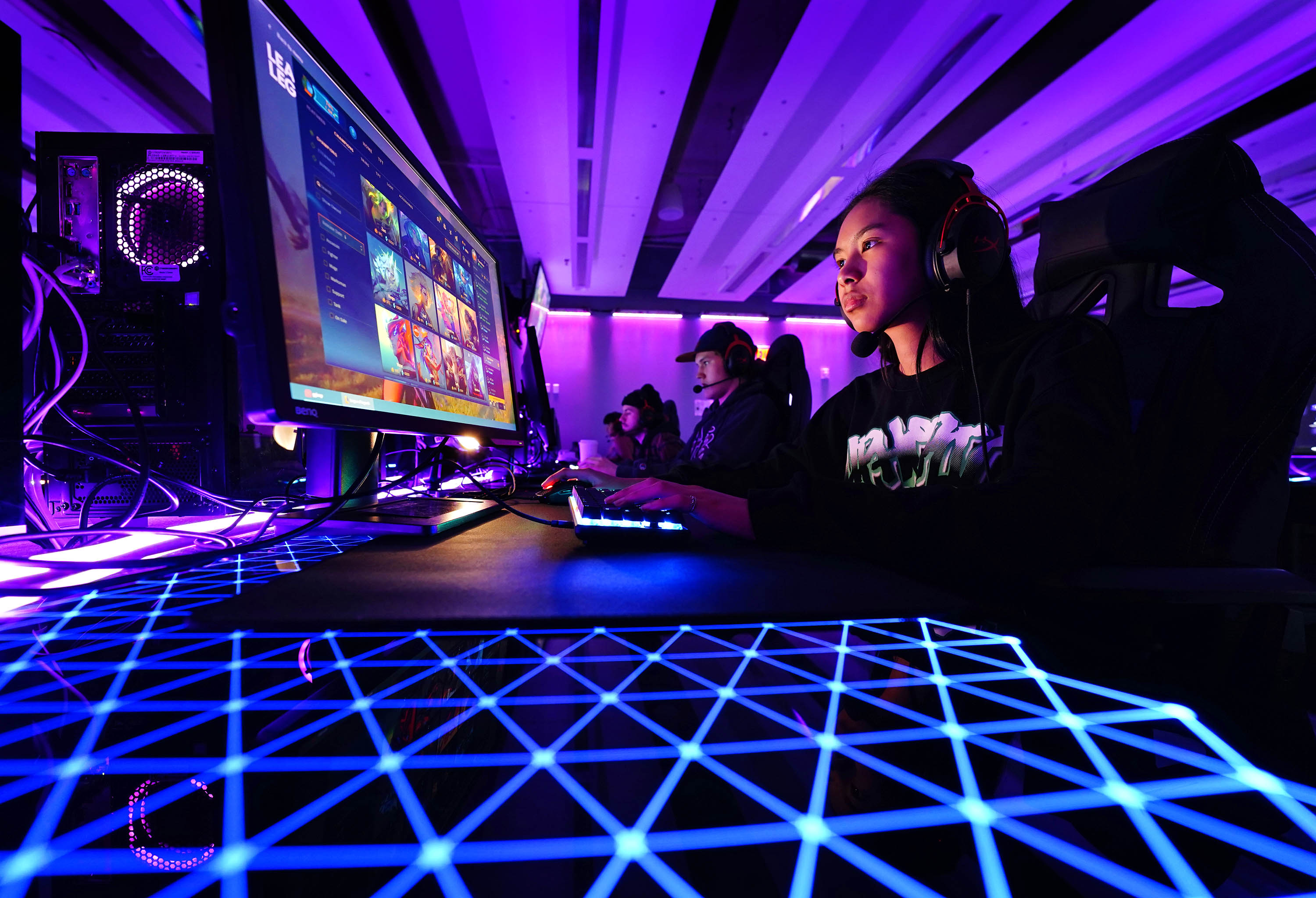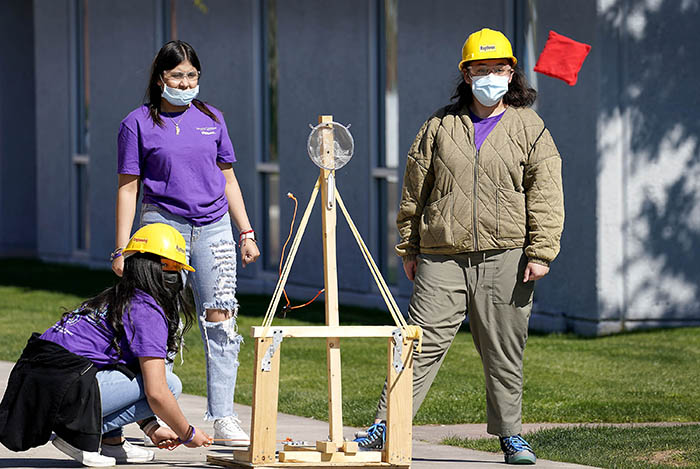
Story by Lana Sweeten-Shults
Photos by Ralph Freso
GCU News Bureau
Anilem Estrada is fierce.
Crouched on the east lawn of Grand Canyon University’s Sunset Auditorium, the student from Sunnyside High School in Tucson squints her eyes and stares down the target ahead of her, some 20 feet away.
Her weapon of choice: a catapult, its launching arm held at bay by a bundle of sinewy latex tubes.
She unhooks the arm, the end of which holds a mesh sieve on which Estrada and her team – an all-girl catapult engineering team – have placed a bean bag as they play a round of the popular lawn game, only with catapults.
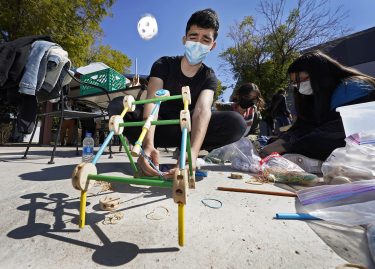
The bean bag soars toward the hole on the cornhole board but falls short of the target. When sighs of disappointment among the team ensue, a bystander throws a bit of advice their way: “I notice that when you place the bag farther back on the arm, it gets closer to the hole. I might be wrong, but …”
On the next try: Success!
The team yawps and cheers, celebratory high-fives encapsulating the flurry of excitement in the air.
The Cornhole Catapult Challenge is just one of the design competitions Estrada and more than 75 middle and high school students from eight campuses tackled on Saturday at the Technology Building and Sunset Auditorium as part of the Mathematics, Engineering, Science Achievement (or MESA) Regional Design Day, hosted by GCU’s K12 Educational Development.
It was a chance for MESA-enrolled high school students who have been working on this year’s design challenges to test them and get feedback from volunteer judges before the statewide MESA Day competition April 30 at the University of Arizona. Or, if those high school students hadn’t yet started on their designs, it was a chance for them to become familiar with this year’s challenges.
Not only can students build a cornhole catapult, but they also can construct a model of a disaster relief shelter, design a sustainable skyscraper, participate in the Hack Attack Challenge to hack other teams’ computers while protecting their own, or create a mobile app, to name a few.
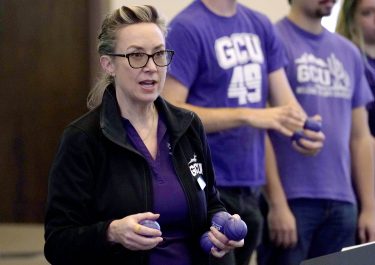
GCU’s STEM club students were right there alongside them, “supporting the K-12 (STEM) pipeline,” said GCU Director of K12 STEM Outreach Marni Landry, from the Honors College to IEEE (the electrical engineering club) to the STEM Council.
The University’s Technology Club manned the Hack Attack Challenge in the Technology Building, where participants solved computer science puzzles to earn points – points they can use to slow down their opponents.
At the end of the competition, Technology Club President Trevor Baines called out a few names for the first-, second- and third-place winners and then asked the next important question, “Who made Among Us?” laughing as he tried to find out which student paid tribute to the online video game during the competition.
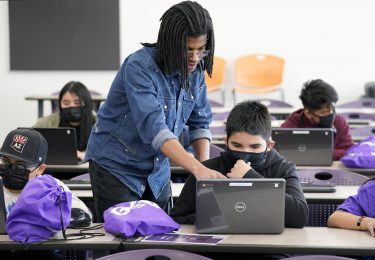
The Technology Club is on the verge of finishing a wearable device it has been designing since just before COVID-19. The hope is that the Havocs will wear the smart LED bracelets, which will be programmed to emit a light show during a basketball game.
But the club is working on other projects.
Sophomore cybersecurity major and Technology Club member Diego Briceno was on hand to help MESA students but also to tout the Deep Racer Spring 2022 High School Competition, which the club and Discount Tire will host May 13 on the GCU campus.
The club displayed the Amazon Web Services Deep Racer, a futuristic-looking model vehicle that students will program to help it learn how to drive, then race the car autonomously as part of the world’s first global autonomous racing league. The car will, essentially, teach itself how to drive through AI.
Briceno said he volunteered Saturday because “I see myself in the young generation. I wish I could have been in their seats doing these small or largescale cyber events. And I know that if I started sooner, I could have been a lot more experienced, probably could have had a better job, whatever.
“I personally love giving them the opportunity.”
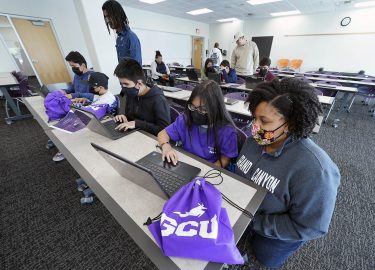
The Technology Club’s Niya Patterson, lead for the Girls Who Code Committee, also manned the Hack Attack Challenge and was signing up students for the committee’s Coding With My Girls event March 26, where teams will learn to build a website.
She was there, she said, “helping the next generation get more prepared than what I was. Personally, I’m a cyber major, but working with Coding With My Girls made me try to brush up on my coding skills. I also love providing events like this … to give them a taste of what to expect if they were to study this in college.”
Patterson said events such as MESA, Coding with My Girls and the AWS Deep Racer Challenge are great events, even for students who are not necessarily interested in a technology career.
“They have an entire project they can add to their portfolio and just say, for example, 'I built a website with a team.' That’s great to say, especially if you’re going in a technology field.”
Carlos Hidalgo, whose son, Leonardo, an Alhambra Traditional School student, placed third in the Hack Attack Challenge, said it took him until his mid 30s to realize that engineering was what he wanted to do. He wanted his children to find that path earlier.
“My son is into coding and wanted to do this today,” he said, “so we got up early to come here.”
The GCU chapter of the Society of Women Engineers helped students in the Disaster Relief Shelter area. Students had 20 minutes to create a model shelter, then they presented their design to judges. Or they could bring in a prebuilt shelter, which is what a team from the Maricopa Institute of Technology did. A volunteer judge asked question after question about the team’s design and analyzed their design sketches.
The high school students, led by engineering teacher Mehul Gandhi, built a model house meant to withstand an earthquake.
The house, perched on tennis balls for quake testing, also included a slanted roof for rainwater collection and featured other sustainable home features.
“Depending on the type of feedback we get today, we’ll work on it and make it better,” Gandhi said.
Maricopa Institute of Technology 10th grader Zahra Ali said what she has enjoyed the most is the camaraderie: “Just doing it (the competition) together is fun.”
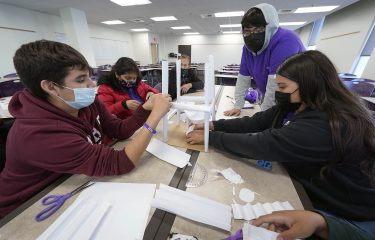
Jared Smidt, president of the GCU Robotics Club, was busy in the Paper Ball Run Challenge room with other members of his club, which is getting ready for a robotics competition March 5 at Embry-Riddle Aeronautical University.
High school students used paper, tape and cardboard to build ramps and get a ball to go down those ramps as slowly as possible without getting stuck.
GCU Society of Women Engineers chapter member Raneim Gadala, a sophomore engineering major, said she wanted to help at Saturday’s events because “I love kids, and I feel like everybody should get exposure to engineering.”
“And it’s literally Engineering Week (National Engineers Week), so what better way to help kids get excited about engineering?” added fellow SWE member Daisy Valencia, a biomedical engineering senior.
GCU SWE Project Engineer Jess Padilla, a senior mechanical engineering major, said she wanted to volunteer at MESA Regional Design Day because she has younger siblings.
“I’m far away from them, so just having an opportunity to inspire them always makes me feel good,” Padilla said. “And I didn’t really have a lot of experience (with engineering) growing up, so I want to make sure that every kid has an opportunity and gets excited for it,” just as Anilem Estrada was.
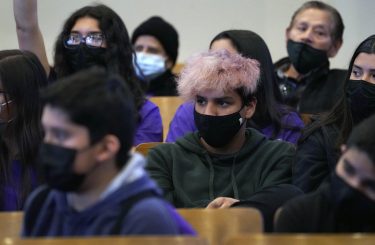
As she prepared to launch another cornhole bag at the cornhole board with her team’s catapult, Matt Bergstrom, a junior mechanical engineering major and powertrain lead of GCU’s Canyon Motorsports, told the team, “It’s points for getting on the board, as well, so if you can consistently hit the board, that’s a good benchmark.”
Estrada said what she has loved about the MESA competition is simple: “You use a lot of mentality. You have to think about everything a lot.”
Then she smiled.
“I just like seeing the results, because it’s a lot of hard work.”
GCU Senior Writer Lana Sweeten-Shults can be reached at lana.sweeten-shults@gcu.edu or at 602-639-7901.
***
Related content:
GCU Today: Students make the circuit at MESA Regionals
GCU Today: SWE, Tech Club bring girls-only coding event to GCU
GCU Today: GCU helps school engineer a brighter future

